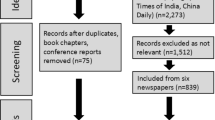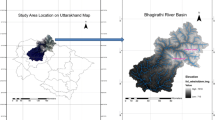Abstract
Road safety guidelines are not properly implemented and are not diverse enough to counter an annual increase in traffic volume. The mitigation techniques of road regulating bodies have failed in minimizing road accidents with the increase in road users. Therefore, the purpose of this study is to provide valuable insight to the facilitators and decision-making stakeholders by predicting the number of accidents because it is an existential hurdle toward the prevention of accidents. Therefore, this study aims to create temporal patterns to forecast the accident rates in Pakistan by utilizing univariate time series analysis such as seasonal autoregressive integrated moving average (SARIMA) and exponential smoothing (ES) models. The results indicate that the ES model fitted better on accident data over the SARIMA model after calculating the lowest mean absolute error, root mean square error, mean absolute percentage error and normalized Bayesian information criterion. The study provides the guiding principles to implement the forecasted accident rates in the designing of roads to ensure the safety of end users which is a prime interest for accident rate collection agencies, decision-makers, design consultants and accident prevention departments.











Similar content being viewed by others
Availability of data and material
Already available in manuscript.
References
Peden, M.; Scurfield, R.; Sleet, D.; Mohan, D.; Hyder, A.A.; Jarawan, E.; Mathers, C.D.: World Report on Road Traffic Injury Prevention. World Health Organization Geneva, Geneva (2004)
Kopits, E.; Cropper, M.: Traffic Fatalities and Economic Growth. The World Bank, Washington (2003)
WHO: Global Status Report on Road Safety 2018: Summary. World Health Organization, Geneva (2018)
ITF, Road safety annual report 2019. 2019: France.
Lukusa, M.T.; Phoa, F.K.H.: A Horvitz-type estimation on incomplete traffic accident data analyzed via a zero-inflated Poisson model. Accid. Anal. Prev. 134, 105235 (2020)
Editorial, D., Growing Auto sales, in Dawn Newspaper. 2020.
Editor, Automobile sales jump 46% in January 2021, in Express Tribune. 2021.
Pakistan records 31% increase in car sales in February, in Geo. 2021.
Pakistan, G.o., Pakistan National Road Safety Strategy 2018–2030, M.o. Communication, Editor. 2018.
correspondent, A., ‘Over 6,000 people die in Pakistan road accidents annually’, in The News. 2019.
Ahmad, T., ‘Every five minutes there’s a road accident fatality in Pakistan’, in SAMAA. 2020.
PBS, Traffic Accidents. 2019.
Rabbani, B. A.; Qaiser Iqbal, S. A. K.; Zaman, E. Q.: Analysis of Vehicle Accidents using Spatio-Temporal Tools in ArcGIS; A Case Study of Hayatabad, Peshawar. International Journal of Engineering Works, 2019
Rodríguez, J.; Jattin, J.; Soracipa, Y.: Probabilistic temporal prediction of the deaths caused by traffic in Colombia. Mortality caused by traffic prediction. Accid. Anal. Prev. 135, 105332 (2020)
Abdulqader, Q.M.; Hassan, M.T.; Ahmad, K.H.: Building a mathematical sarima model for forecasting the number of monthly injured people by traffic accidents in Erbil City. Technol. Rep. Kansai Univ. 9(03–62), 909–916 (2020)
Asogwa, O.C.; Eze, C.M.; Okonkwo, C.R.: Modeling the cases of road traffic crashes: a case of exponential smoothing approach. Int. J. Math. 56(1), 52–62 (2019)
Zaouali N, K.I., "ESTIMATION DE L'INSECURITE ROUTIERE EN TUNISIE: UN MODELE SARIMA (Modeling Road Accident in Tunisia: A SARIMA Approach).". SSRN Electronic Journal 3549441, 2017.
Musarrat, M.A.; Omair, I.; Khan, S.; Shah, A.A.: Causes OF delay IN the execution phase OF construction projects IN khyber PUKHTOONKHWA Pakistan. Sarhad Univ. Int. J. Basic Appl. Sci. 4(1), 62–70 (2017)
Naim, I.; Mahara, T.; Idrisi, A.R.: Effective short-term forecasting for daily time series with complex seasonal patterns. Procedia Comput. Sci. 132, 1832–1841 (2018)
Eze, C.M.; Okonkwo, C.R.: On the Modelling of Road Traffic Crashes: A case of SARIMA Models. J. Adv. Res. Math. Stat. 5(8), 15–35 (2018)
Parvareh, M.; Karimi, A.; Rezaei, S.; Woldemichael, A.; Nili, S.; Nouri, B.; Nasab, N. E.: Assessment and prediction of road accident injuries trend using time-series models in Kurdistan. Burns & trauma, 2018: p. 6(1).
Manikandan, M.; Prasad, V.; Mishra, A.K.; Konduru, R.K.; Newtonraj, A.: Forecasting road traffic accident deaths in India using seasonal autoregressive integrated moving average model. Int. J. Commun. Med. Public Health 5(9), 3962 (2018)
Zolala, F.; Haghdoost, A. A.; Ahmadijouybari, T.; Salari, A.; Bahrampour, A.; Baneshi, M. R.; Razzaghi, A.: Forecasting the trend of traffic accident mortality in West Iran. Health Scope 5(3) (2016)
Yousefzadeh-Chabok, S.; Ranjbar-Taklimie, F.; Malekpouri, R.; Razzaghi, A: A time series model for assessing the trend and forecasting the road traffic accident mortality. Arch. Trauma Res. 5(3) (2016)
Zhang, X.; Pang, Y.; Cui, M.; Stallones, L.; Xiang, H.J.A.: Forecasting mortality of road traffic injuries in China using seasonal autoregressive integrated moving average model. Ann. Epidemiol. 25(2), 101–106 (2015)
Akhtar, S.; Ziyab, A.H.: Impact of the penalty points system on severe road traffic injuries in Kuwait. Traffic Inj. Prev. 14(7), 743–748 (2013)
Naqvi, N.K.; Mohammed, Q.A.; Enoch, M.P.: Do higher fuel prices help reduce road traffic accidents? Accid. Anal. Prev. 135, 105353 (2020)
Ichikawa, M.; Inada, H.; Nakahara, S.: Increased traffic injuries among older unprotected road users following the introduction of an age-based cognitive test to the driver’s license renewal procedure in Japan. Accid. Anal. Prev. 136, 105440 (2020)
Hyndman, R.J.; Khandakar, Y.: Automatic time series for forecasting: the forecast package for R. Department of Econometrics and Business Statistics, Monash University, Melbourne (2007)
Hyndman, R.J.; Koehler, A.B.; Snyder, R.D.; Grose, S.J.I.J.: A state space framework for automatic forecasting using exponential smoothing methods. Int. J. Forecast. 18(3), 439–454 (2002)
Woldeyohannes, S.M.; Moges, H.G.: Trends and projections of vehicle crash related fatalities and injuries in Northwest Gondar, Ethiopia: a time series analysis. Int. J. Environ. Health Eng. 3(1), 30 (2014)
Abdella, G.M.; Alhajyaseen, W.; Al-Khalifa, K. N.; Hamouda, A. M.: Usage of non-linear regression for modeling the behavior of motor vehicle crash fatality (MVF) rate. In: The Proceedings of the International Conference on Industrial Engineering and Operations Management, 2016: (pp. 11–13).
Yusuf, W.A.S.; BaraU, M. O., Saratu, R., Road traffic accidents in Nigeria: trends, challenges and forecast. 2018, researchgate.net.
Rahamneh, A.A.A.A.: Using single and double exponential smoothing for estimating the number of injuries and fatalities resulted from traffic accidents in Jordan (1981–2016). Middle-East J. Sci. Res. 25(7), 1544–1552 (2017)
Hossain, M.S.F.; Omor, M.: Road traffic accident scenario, pattern and forecasting in Bangladesh. J. Data Anal. Inf. Process. 7(2), 29–45 (2019)
Rangpueng, A.; Thammawijaya, P.: 945 Accuracy of short-term forecasting of occurrence of motorcycle injury using time series analysis. BMJ Publishing Group Ltd., London (2016)
Pafiadache, C.Z.; Roselaine, R., Souza, A. M.: Estudo das taxas de letalidade por acidente de trabalho no Rio Grande do Sul, Brasil. Revista ESPACIOS| Vol. 35 (Nº 3) Año 2014, 2014.
Li, M.; Li, Z.; Xu, C.; Liu, T.: Short-term prediction of safety and operation impacts of lane changes in oscillations with empirical vehicle trajectories. Accid. Anal. Prev. 135, 105345 (2020)
Li, P.; Abdel-Aty, M.; Yuan, J.: Real-time crash risk prediction on arterials based on LSTM-CNN. Accid. Anal. Prev. 135, 105371 (2020)
Tang, D.; Yang, X.; Wang, X.: Improving the transferability of the crash prediction model using the TrAdaBoost. R2 algorithm. Accid. Anal. Prev. 141, 105551 (2020)
La Torre, F.; Meocci, M.; Domenichini, L.; Branzi, V.; Paliotto, A.: Development of an accident prediction model for Italian freeways. Accid. Anal. Prev. 124, 1–11 (2019)
Formosa, N.; Quddus, M.; Ison, S.; Abdel-Aty, M.; Yuan, J.: Predicting real-time traffic conflicts using deep learning. Accid. Anal. Prev. 136, 105429 (2020)
Diependaele, K.; Martensen, H.; Lerner, M.; Schepers, A.; Bijleveld, F.; Commandeur, J.J.: Forecasting German crash numbers: the effect of meteorological variables. Accid. Anal. Prev. 125, 336–343 (2019)
Chen, Z.; Qin, X.: A novel method for imminent crash prediction and prevention. Accid. Anal. Prev. 125, 320–329 (2019)
Peng, Y.; Li, C.; Wang, K.; Gao, Z.; Yu, R.: Examining imbalanced classification algorithms in predicting real-time traffic crash risk. Accid. Anal. Prev. 144, 105610 (2020)
Kuhn, L.; Davidson, L.L.; Durkin MSJAJoE, : Use of Poisson regression and time series analysis for detecting changes over time in rates of child injury following a prevention program. Am. J. Epidemiol. 140(10), 943–955 (1994)
Masani, P.R.: Norbert Wiener 1894–1964. Vol. 5. 2012: Birkhäuser.
Box, G. E.; Jenkins, G. M.; Reinsel, G.: sTime series analysis: forecasting and control Holden-day San Francisco. BoxTime Series Analysis: Forecasting and Control Holden Day1970, 1970.
Box, G.; Jenkins, G.: Time series analysis, forecasting and control-Segunda Edição. Prentice Hall, San Francisco (1976)
Nau, R.: The mathematical structure of arima models. Duke University Online Article, 2014.
Barnston, A.G.: Correspondence among the correlation, RMSE, and Heidke forecast verification measures; refinement of the Heidke score. Weather Forecast. 7(4), 699–709 (1992)
Brown, R.G.: Exponential smoothing for predicting demand. Operations Research. Vol. 5. No. 1. 901 ELKRIDGE LANDING RD, STE 400, LINTHICUM HTS, MD 21090-2909: INST OPERATIONS RESEARCH MANAGEMENT SCIENCES (1957)
Brown, R.G.; Meyer, R.F.: The fundamental theorem of exponential smoothing. Oper. Res. 9(5), 673–685 (1961)
Brooks, C.: Introductory econometrics for finance. Cambridge University Press, Cambridge (2019)
Karadimitriou, S.; Marshall, E.J.M.f.h.r.R.p.: Outliers, Durbin-Watson and interactions for regression in SPSS.[Online] Available at: https://www.sheffield.ac.uk/polopoly_fs/1.536482!/file (2015)
Deco, G.; Neuneier, R.; Schümann, B.J.N.N.: Non-parametric data selection for neural learning in non-stationary time series. Neural Netw 10(3), 401–407 (1997)
IBM IBM_SPSS_Forecasting. 2012.
Hyndman, R.J.; Athanasopoulos, G.: Forecasting: principles and practice. OTexts (2018).
Marques, E.: Residual Plots in Tableau – why are they so important? 2016 [cited 2020 17-Aug]; Available from: https://www.thedataschool.co.uk/elnisa-marques/residual-plots-tableau-important/.
Thomas Hill, P.L.; Paweł, L.: Statistics: methods and applications: a comprehensive reference for science, industry and data mining, 1st edn. StatSoft Inc, Tulsa (2006)
Winter, G.: A comparative discussion of the notion of validity in qualitative and quantitative research. Qual Rep 4(3), 1–14 (2000)
Acknowledgements
The authors would like to thank Universiti Teknologi PETRONAS (UTP) for the support provided for this research.
Funding
None.
Author information
Authors and Affiliations
Corresponding author
Ethics declarations
Conflict of interest
The author(s) declare that they have no competing interests.
Rights and permissions
About this article
Cite this article
Rabbani, M.B.A., Musarat, M.A., Alaloul, W.S. et al. A Comparison Between Seasonal Autoregressive Integrated Moving Average (SARIMA) and Exponential Smoothing (ES) Based on Time Series Model for Forecasting Road Accidents. Arab J Sci Eng 46, 11113–11138 (2021). https://doi.org/10.1007/s13369-021-05650-3
Received:
Accepted:
Published:
Issue Date:
DOI: https://doi.org/10.1007/s13369-021-05650-3




